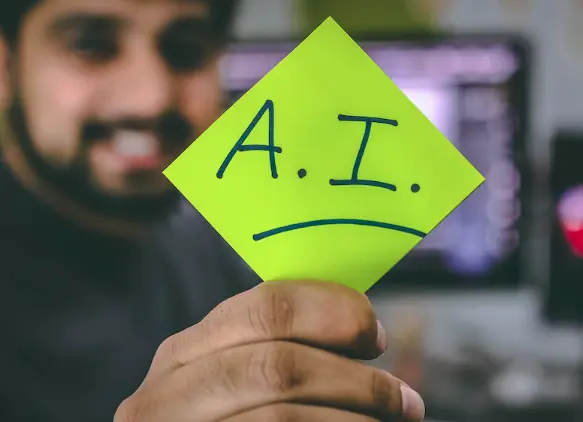The landscape of healthcare is rapidly evolving as technology continues to advance. From electronic health records to telemedicine, wearables, and remote patient monitoring, healthcare providers are exploiting these innovative solutions to deliver care in new ways.
Although we live in the era of tremendous progress, technologies are expected to become even more sophisticated, helping to improve patient outcomes, streamline care delivery, and increase efficiency.

In this article, we will discuss trends in healthcare industry, the growing importance of telemedicine and remote patient monitoring, and how advances in technology will enable these services to become more widespread and effective. Additionally, we will delve into emerging technology in healthcare, specifically the advancements and potential of artificial intelligence and machine learning.
Revolutionizing healthcare experience with telemedicine and remote patient monitoring
Telemedicine and remote patient monitoring (RPM) are rapidly growing in importance as patients and healthcare providers seek to minimize the need for in-person visits and improve the overall patient experience. Advances in technology are expected to further enhance the capabilities of telemedicine and RPM, making these services even more effective and widespread. Let’s learn what it means and what we should expect.
The benefits of telemedicine and RPM for patients and providers
The integration of telemedicine and RPM is poised to transform the healthcare industry on a broader scale:
Improved accessibility. For patients residing in rural areas, telemedicine provides a lifeline to quality healthcare. Patients can easily connect with healthcare professionals and receive medical care from their homes with just a few simple clicks. This newfound accessibility eliminates the barriers of distance, enabling timely medical consultations and interventions that can make a significant difference in their well-being.
Increased quality of treatment. Telemedicine and RPM enable healthcare providers to deliver care with increased efficiency and effectiveness. Through remote monitoring, physicians can keep a vigilant eye on patients’ health status, tracking vital signs, medication adherence, and other crucial data. This constant stream of information allows for proactive interventions, ensuring that potential health issues are detected early, minimizing complications and improving patient outcomes.
Personalized care. Additionally, the utilization of telemedicine and RPM enable personalized care. Healthcare providers can use data insights to tailor treatment plans, medications, and therapies to the unique needs of each patient. By collecting real-time data and analyzing trends, medical professionals gain a comprehensive understanding of their patients’ conditions, leading to more precise diagnoses.
Healthcare services optimization. This paradigm shift towards telemedicine and RPM not only enhances patient experiences but also optimizes the healthcare system as a whole. By reducing the strain on physical facilities, healthcare providers can allocate resources more effectively, focusing on patients who require in-person care while efficiently managing others through remote services. This streamlined approach helps to alleviate the burden on overcrowded hospitals and clinics, allowing medical professionals to allocate their time and expertise where it is most needed.
Technological advancements that will drive widespread adoption of telemedicine and RPM
In addition to the increasing prevalence of smartphones, wearables, and other connected devices, software development for healthcare is also expected to drive the growth of telemedicine and RPM. For example, the emergence of 5G networks will provide faster and more reliable connectivity, allowing for real-time transmission of high-quality medical data. This will prove particularly valuable during emergencies or when patients require urgent medical attention.
Moreover, telemedicine and RPM are expected to be significantly influenced by machine learning (ML) and artificial intelligence (AI) in the future. Healthcare providers can utilize these technologies to examine extensive patient data and offer customized suggestions. Additionally, they can identify potential health problems before they worsen, thereby enabling early intervention and treatment.
In 2023, we can also expect to see an increase in virtual reality (VR) and augmented reality (AR) technology being used. VR and AR can provide patients with immersive experiences that can aid in pain management, physical therapy, and mental health treatment.
The role of artificial intelligence and machine learning in the future of healthcare

AI and ML are already being used in a variety of healthcare applications, such as medical imaging, drug discovery, and personalized medicine. How they are used:
- AI-powered advanced image processing systems, such as the ones developed by https://www.novarad.net/, help improve doctor-patient engagement with the power of storyboards. They also enable a more efficient across-department collaboration, which improves the speed and accuracy of a diagnosis and, ultimately, patient outcomes.
- ML is also used to develop and test new drugs, helping to speed up the discovery process and bring new treatments to market faster.
Advantages of implementing AI and ML in healthcare
The application of AI and ML in the healthcare sector can transform the field. Through the analysis of extensive data and the provision of insights into patient care, these technologies possess the capacity to:
- Enhance precision and rapidity of diagnoses, facilitating timely treatment and potentially favorable results.
- Help generate treatment strategies that are tailored to individual patients, resulting in better outcomes and an optimized utilization of resources.
- Boost efficiency and output, releasing healthcare providers to concentrate on delivering patient care.
- Reduce costs, as AI and ML can help to identify cost-saving measures and reduce waste.
The latest developments in AI and ML for healthcare
In 2023, we can expect to see even more significant advancements in AI and ML in healthcare, including:
Improved accuracy in diagnosis: AI algorithms will become even better at detecting patterns and identifying subtle differences in medical images, allowing for more accurate and earlier diagnoses.
Predictive analytics: By analyzing large amounts of data, AI and ML can identify patterns and make predictions about patient outcomes and potential health risks.
Personalized treatment plans: Using AI and ML, doctors will be able to create personalized treatment plans for patients based on their unique medical history, genetic makeup, and other factors.
Improved patient monitoring: AI and ML can analyze data from wearable devices, such as fitness trackers or smartwatches, to monitor patients in real-time and provide early warnings of potential health issues.
The role of wearable technology and sensors in healthcare
The popularity of sensors and wearable technology in healthcare has surged in recent times due to their convenient and efficient nature of monitoring health and collecting data. These devices offer a myriad of advantages, including:
- The gadgets can monitor crucial health indicators such as the pulse rate, blood pressure, and sleep habits.
- Wearables and sensors are particularly useful for patients with chronic conditions such as diabetes and heart disease, as they provide a continuous stream of data that can be used to monitor and manage their health.
- Wearable devices can be used to monitor a patient’s health in real-time, allowing healthcare providers to make more informed decisions about their care. This data can also be used to identify trends and patterns in a patient’s health, which can help with early diagnosis and intervention.
And this list of benefits will only expand in the near future.
Emerging trends in wearable technology and sensors in healthcare
New developments in wearable technology and sensors are expected to take place, with enhanced features and capabilities. Below are some ways in which these devices are predicted to evolve:
Smaller and more discreet: Wearables are expected to become even smaller and more discreet, making them more comfortable to wear for long periods of time. This will encourage patients to wear them for extended periods of time, providing more data to healthcare providers.
Improved accuracy: The accuracy of wearable technology is expected to improve. This will provide more reliable data to healthcare providers, allowing for more accurate diagnosis and treatment plans.
Integration with other technologies: For example, data collected from these devices could be automatically added to a patient’s electronic health record, allowing healthcare providers to access and analyze the data more easily.
Electronic health records: The future of healthcare technology
Electronic health records (EHRs) have been a game-changer for the healthcare industry, allowing for the efficient management of patient information and improved patient outcomes. In the past, paper-based records were often difficult to access, prone to errors, and not easily transferable between healthcare providers.
EHRs have addressed these challenges and have become an essential component of modern healthcare. They provide a centralized platform to store and manage patient information, including medical histories, diagnoses, medications, and test results. This information can be accessed by authorized healthcare professionals, enabling better coordination of care between providers and improving patient outcomes.
Additionally, EHRs enable data-driven decision-making, allowing healthcare providers to use data to identify trends, monitor patient progress, and develop more effective treatment plans.
Technological advances for collecting and managing health data
Recent advances in technology have made it easier to collect and manage health data, further increasing the importance of EHRs. With the increasing prevalence of wearable devices and other connected technologies, healthcare providers can now collect real-time data on patients health metrics.
Healthcare providers can get a complete perspective of patients’ health condition by integrating this data into EHRs. Furthermore, the use of artificial intelligence and machine learning can help to analyze the vast amounts of data collected, identifying patterns and making personalized treatment recommendations.
In 2023, we can expect EHRs to become even more advanced, with further integration of technology and improved data management capabilities. Some potential evolutions include:
- Increased interoperability: EHRs will become more interoperable, allowing for seamless data exchange between healthcare providers. This will improve care coordination and reduce errors.
- Improved patient engagement: Patients will be more engaged in their own healthcare, as they will have increased access to their personal health information and can take a more proactive role in managing their care.
- Use of blockchain technology: Blockchain technology can be used to enhance the security and privacy of EHRs, ensuring that patient data is protected from cyber threats.
- Increased use of telemedicine: The use of telemedicine will continue to increase, allowing for remote access to healthcare services and improved patient outcomes. EHRs can be used to facilitate telemedicine appointments, with patient information readily available to healthcare providers during virtual consultations.
Conclusion
Technology is expected to bring prominent changes to healthcare. From the growing popularity of wearable technology and sensors to the continued advancements in telemedicine and RPM, these developments have the potential to revolutionize the way healthcare is delivered and received.
With the help of artificial intelligence and machine learning, healthcare providers will be able to make more accurate diagnoses and treatment recommendations, while EHRs will allow for more efficient data collection and management. While there may be some challenges in implementing these technologies, the potential benefits are immense, and we can expect to see continued growth and progress in the years to come.
Join 25,000+ smart readers—don’t miss out!









